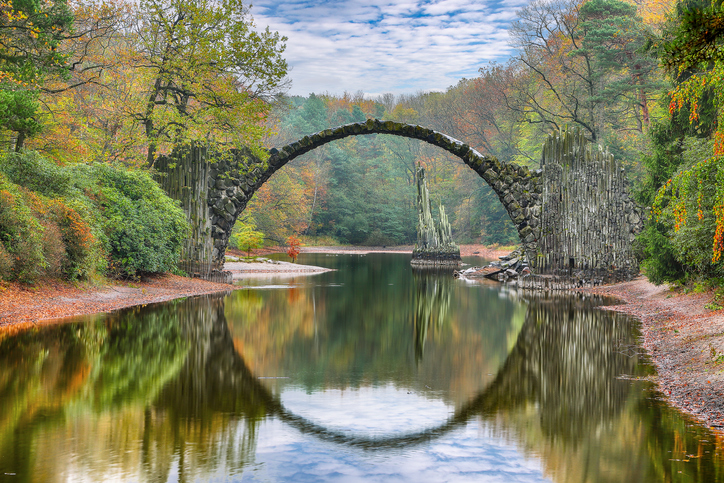It almost doesn’t look real (Picture: Getty)
From Berghain to beer festivals, Germany has so much to offer visitors all year round.
During the summer months, popular cities like Berlin come alive with riverside swimming spots and canal-side clubbing, while the Christmas markets in Cologne and Düsseldorf usher in a different type of tourist looking for a taste of local life come winter.
But step away from the cities and you’ll find a whole other side to the country – with one area, in particular, that’s been hailed as ‘the most beautiful place’ in Germany.
On the far East of Germany and bordering the Czech Republic lies Saxony; a state in Eastern Germany that looks like something out of a fairytale, with some palaces and castle dating back to the Middle Ages.
The tenth largest of Germany’s sixteen states, the spot is brimming with history – mainly as it was the epicenter of events during some of the most decisive points in European history, including the Reformation and Napoleonic Wars.
It’s also perhaps best-known for its stunning Baroque capital, Dresden, where many historic buildings were rebuilt after WWII.
How to get to Saxony
While there are no direct flights from the UK to Dresden, there are some to the city of Leipzig, which is on the outskirts of the region – with a 1 hour and 40 minute flight from London Luton available from just £45 return.
From Leipzig it’s an hour’s drive to the capital of Dresden by car, or a two hour and 20 minute train.
When to visit Saxony
While you might expect the peak summer months to be the best time to visit the region, this isn’t the case.
Lots of people visit Saxony during the winter months – with January being a popular month for winter-sport enthusiasts. This comes down to the fact that Saxony’s Ore Mountains boasts 70 ski runs, over 60 drag lifts, around 621 miles (1.000 kilometres) of cross-country skiing trails, plus toboggan runs and ice-skating rinks.
For those who don’t like winter sports, the Christmas Garden Dresden transforms Pillnitz Palace and Park into a magical winter wonderland between November and January every year.
However, anyone visiting during the summer can enjoy the greenery of the region in full force.
What’s the weather like
The weather is incredibly pleasant in Saxony during the peak summer months, with temperatures ranging from 20°C and 25°C.
July is the sunniest month in Saxony and, with it being Europe, it’s hardly a surprise that January is the coldest month – with an average maximum daytime temperature of 4°C.
Things to do in Saxony
With Conde Nast Traveller hailing numerous places in Saxony as some of the ‘most beautiful places in Germany’ there’s lots to get stuck into – and with the region boasting everything from stunning castles to picturesque towns, you won’t be short of things to do.
The quaint town of Görlitz, on the Polish border, should absolutely be on your list, having won the ‘European Location Award’ in 2017. It was one of the rare well-preserved towns to have survived WWII in Eastern Germany, as a result you’ll find picturesque buildings and charming streets galore.
Rakotzbrücke, hidden in Kromlau’s Rhododendron Park in the north of the state, is also a must-visit. Also known as Devil’s Bridge, the 19th-century structure creates the perfect stone circle when reflected in the water below.
Other top attractions in Saxony include Frauenkirche Dresden, a Lutheran church in the capital, as well as Zwinger – a complex of gardens also in the city.
Old town hall and market place in Leipzig, Germany at dawn. (Picture: Getty)
The city of Leipzig is also a magnet for culture lovers, with a rich musical history, vibrant galleries, and magnificent landmarks.
On the more rural side of things, enjoy the rugged terrain and huge valleys of Saxon Switzerland National Park, and be sure to visit the 400-year-old Königstein Fortress, too.
MORE : Storm Isha batters Britain & NHS weight loss pills – Paper Talk
MORE : Government borrowing lower than expected in December


